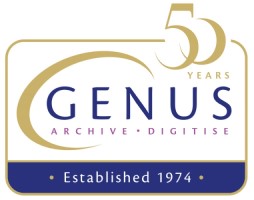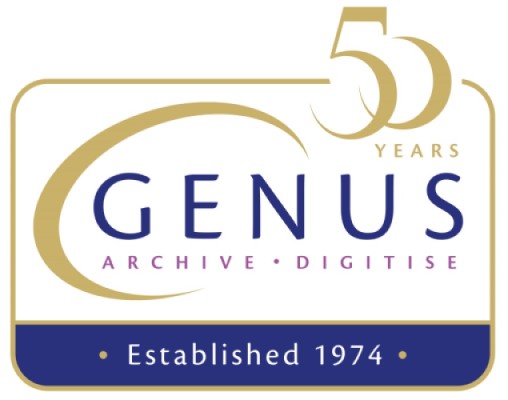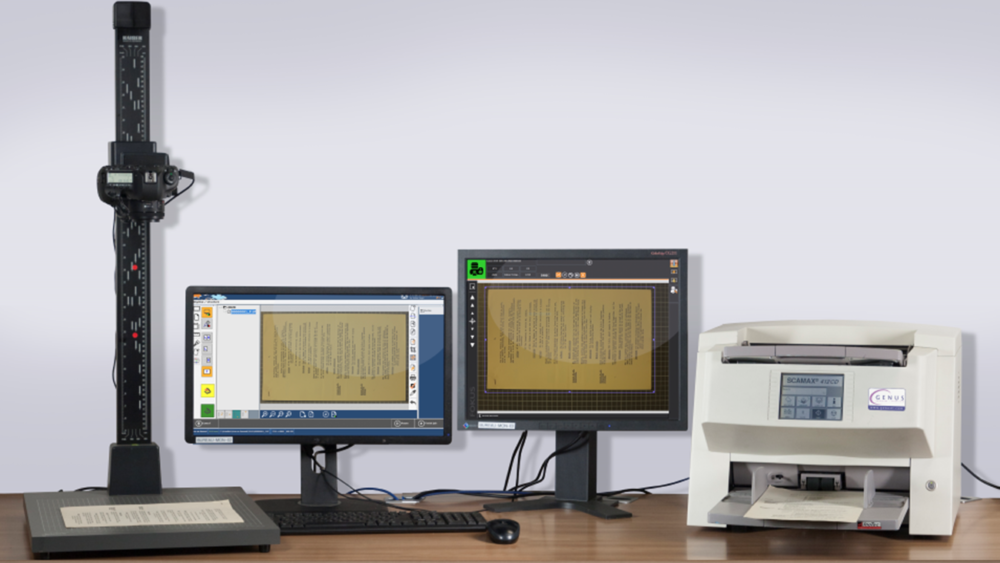HDS brings together three individual components that have been tested and approved by cultural heritage organisations to create a solution ideal for use with modern archives
This new hybrid solution from Genus brings together two paper scanning methodologies – faster rotary scanning and photographic overhead capture – both linked by a software solution. It is an ideal solution for more modern archives as the InoTec 413 can be tailored to suit specific documentation with a relatively fast rotary throughput whilst the photographic solution can be utilised for more fragile originals, all within the same workflow, which is controlled by the Multidotscan software.
The InoTec 413 is a document scanner that has been tested and approved by conservators of some of the UK’s top cultural heritage organisations and deemed suitable for scanning modern archives. Unlike other scanners in the market place the 413 has some bespoke features that make it ideal for cultural heritage digitisation.
 The Slowdown Mode allows for the operator to select a speed of 90, 60, 40 or 20 pages per minute, tailoring the speed of the scanner to the fragility of the original. Normal document scanners transport the document using a series of rollers. Over time these rollers wear, resulting in paper jams. The InoTec 413 transports documents via belts so the document is supported throughout its journey through the scanner. The 413 does not contain glass paper guides thereby reducing the risk of paper jams further and dispensing with the requirement for this consumable item.
The Slowdown Mode allows for the operator to select a speed of 90, 60, 40 or 20 pages per minute, tailoring the speed of the scanner to the fragility of the original. Normal document scanners transport the document using a series of rollers. Over time these rollers wear, resulting in paper jams. The InoTec 413 transports documents via belts so the document is supported throughout its journey through the scanner. The 413 does not contain glass paper guides thereby reducing the risk of paper jams further and dispensing with the requirement for this consumable item.
The scanner can be ICC colour profiled via CCP (Colour Calibration Program) ensuring high quality colour accurate images. The 413 has also been approved by FADGI & ISO 19264-1 for its proven scan quality according to the digitisation guidelines for Archiving of technical documentations, Cultural Heritage materials and many other documents.
Multidotscan (MDS) is the capture/ workflow software acting as the link between the InoTec 413 and the camera as it allows the operator to switch between the two capture devices whilst keeping the integrity of the archive indexing format intact.
 This software is split between two screens—the capture screen and the workflow screen. The capture screen shows the live view of the camera and the camera controls. All the usual camera controls are replicated in the software and are available to the operator. The software identifies the document in the capture area and automatically deskews and crops the document. The amount of crop and the format of crop is set in the software. For example, how much border is created and how the pages are split, can be set.
This software is split between two screens—the capture screen and the workflow screen. The capture screen shows the live view of the camera and the camera controls. All the usual camera controls are replicated in the software and are available to the operator. The software identifies the document in the capture area and automatically deskews and crops the document. The amount of crop and the format of crop is set in the software. For example, how much border is created and how the pages are split, can be set.
 The workflow screen shows the captured images in a windows tree formation and has pre- and post-capture controls. Should an image be out of sequence it is simply dragged and dropped into place. Directories can be named and new directories added for chapter or even article. If outputting to these named directories, the images automatically become indexed bookmarks within a multi-page pdf. Output is available in multiple formats and the project can be outputted to two formats at once.
The workflow screen shows the captured images in a windows tree formation and has pre- and post-capture controls. Should an image be out of sequence it is simply dragged and dropped into place. Directories can be named and new directories added for chapter or even article. If outputting to these named directories, the images automatically become indexed bookmarks within a multi-page pdf. Output is available in multiple formats and the project can be outputted to two formats at once.
Many cultural heritage digitisation departments will already own a copy stand, camera and lighting, meaning your existing equipment can be utilised or alternatively, we can supply the full package. If you would like further information on this product, please visit the webpage or contact us.




Comments are closed.